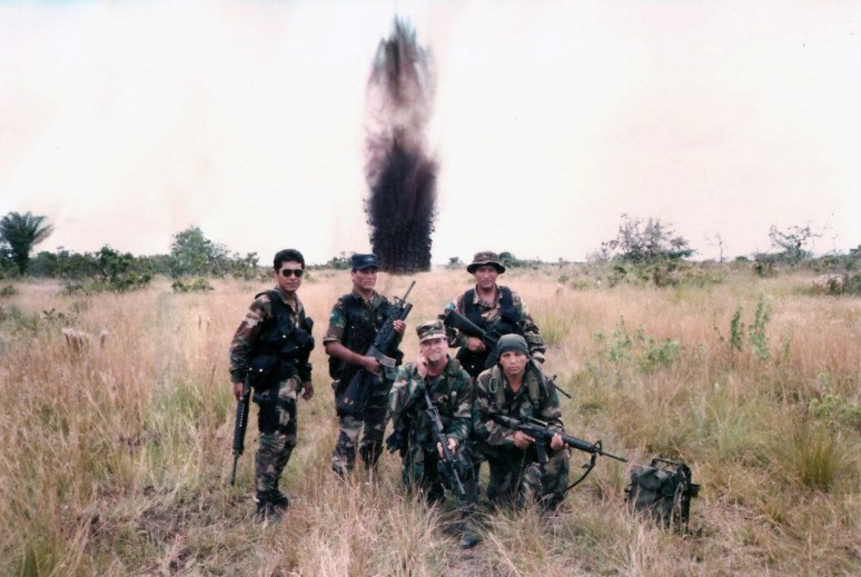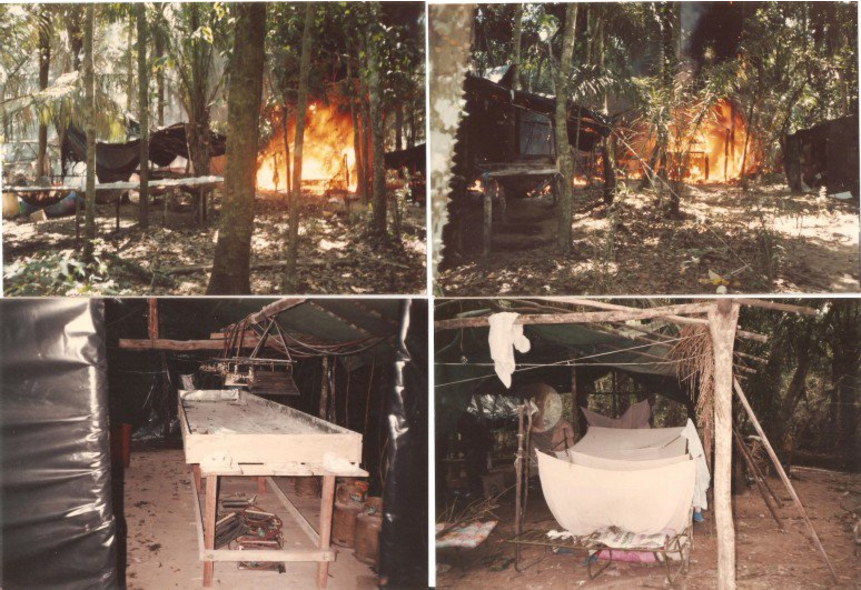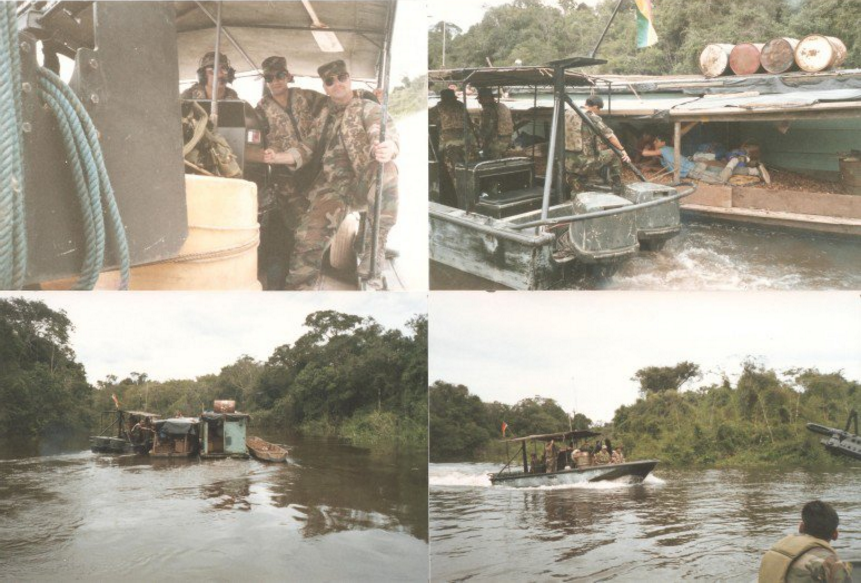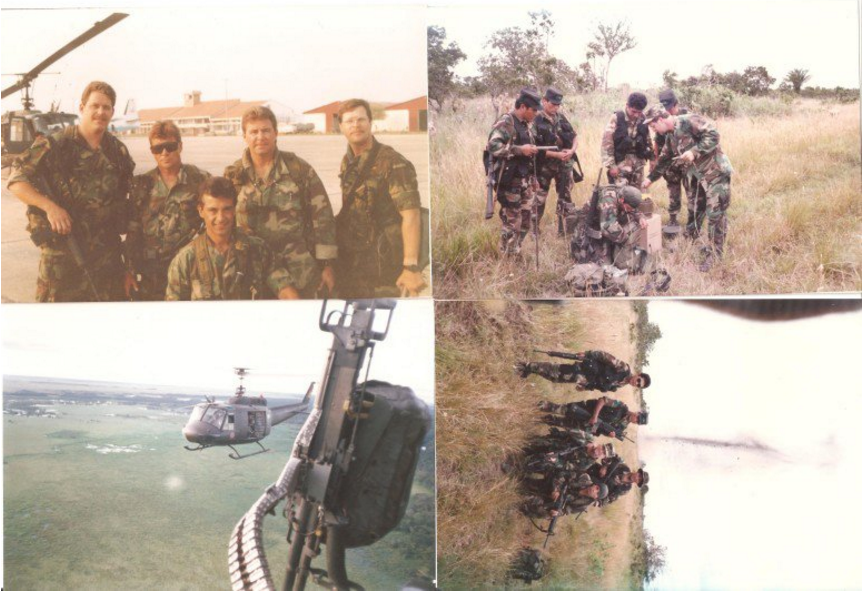How DEA agents and Navy SEALs helped bring down the 'King of Cocaine' Pablo Escobar

Image courtesy of Larry Leveron
The US embassy wanted the DEA and their Bolivian Leopardos to raid a finca, a ranch, out in the remote northern part of the country, and they wanted a rush put on it.
DEA Agent Larry Leveron and Navy SEAL Hershal Davis rode on Bolivian UH-1 Huey helicopters with the Bolivian police, flying toward the finca, when Larry spotted a small, twin-engine aircraft taking off from a dirt airstrip while they were still five miles out.
They knew that the notorious Colombian drug lord Pablo Escobar was on target, but only got word later that he was, in fact, on the private aircraft that escaped just as they raided the compound as a part of Operation Snowcap.
The DEA and 7th Special Forces Group soldiers participated in Snowcap, which deployed them across Central and South America on counter-narcotics missions from 1987 to 1994. Larry had been previously deployed to Bolivia with an earlier DEA mission called “Blast Furnace,” and had also deployed to Costa Rica and Ecuador to support Snowcap.

Image courtesy of Larry Leveron
Back in Bolivia in 1991, Larry found the DEA was tasked with conducting military-style operations, but did not necessarily have the experience needed to be effective, as their agents were law enforcement officers, most with little military experience.
DEA agents assigned to Snowcap could get three weeks of jungle training at Fort Sherman in Panama, explosives training at Quantico, a few weeks of Spanish language immersion training at the border patrol academy, and maybe participate in an abridged form of US Army Ranger School, but then they were on the ground in foreign countries planning and executing operations directed against drug cartels.
In the beginning, DEA agents arrived with only some camping gear bought at K-mart and surplus military kit.
It was Supervisory Special Agent Frank White of the DEA who really turned the program around. A former LRRP/Ranger who had served in Vietnam, White had a better idea of what his agents were up against on the ground and lobbied the Pentagon for improved training.
There was talk at the time of creating a special division within the DEA for the Snowcap mission, but this did not come into existence until the war in Afghanistan kicked off and FAST teams were stood up.

Image courtesy of Larry Leveron
In Bolivia, Leveron was the DEA team leader working with UOMPAR, an acronym which translated as “Mobile Unit for the Rural Patrols,” but they just went by Leopardos, or leopards for short. Knowing that he needed some extra help, Leveron requested the presence of several Navy SEALs deployed to the Trinidad region of Bolivia in the Amazon River basin.
Attached to MilGroup out of the US embassy, Command Master Chief Hershal Davis was partnered with another SEAL petty officer to help train the Bolivians in riverine operations, raids, and counter-ambush techniques.
Partnered with former SEALs who were then working for the DEA, including Richard Dobrich and Loris Kagnoni, and several personnel from the US Coast Guard, the advisory team had a small fleet of boats to work with on the Mamore River. Those boats were launched from a larger riverboat called the “Liberatador,” which acted as the mothership.

Image courtesy of Larry Leveron
“I had a blast down there,” Davis recalled. A veteran SEAL, Davis retired with 34 years of service, having graduated from BUD/S class #36 in 1966 before being deployed to Vietnam. Having experience in South America going back to the initial training of Colombian SOF in 1970, Davis had been there, done that, and had gotten the T-shirt.
“You find some of the weirdest stuff in those jungles,” Davis said. “I met a couple of entomologists who said they find 12 new species of insects every time they came down there.”
One of his main tasks was training the indigenous troops to raid cocaine labs in the jungle. The terrain is constantly evolving, and one of the results is called an oxbow lake, which is created when a river changes its course. This results in the river flowing in wide loops back and forth.
The waterway that the river once took either dries up or becomes a small lake. Drug cartels would cut through the jungle into the oxbow to build their drug labs, then float their small skiffs up inside to load drugs or precursor chemicals.
“I had a couple kobols (corporals) who were gunslingers,” Davis said. “But their officer was an asshole. He was part of the group that killed Che Guevara, which I guess he thought made him important.” Davis would get frustrated that the officer would constantly steal from his men, so one day the command master chief confronted him about it. “If you want something, you pay for it,” Davis said to the Bolivian officer in no uncertain terms. “After that, the kobols respected me.”

Image courtesy of Larry Leveron
When Leveron asked Davis to come to the embassy in La Paz, the veteran SEAL found their planning cell to be tactically flawed. Sitting in on briefings, Davis discovered that the DEA had trouble planning military operations. “If you do anything in the jungle, you have to do it at night,” he pointed out.
There were further frustrations, however, due to the fact that while the DEA could accompany Bolivian forces on operations, the SEALs could not. “Fucking rules of engagement,” Davis stated. “You can’t get anything done. An empty gun in your holster is State Department-ready. I’m a condition-one man.” Condition one means your pistol has a round chambered with the hammer back and the safety on, a reasonable way to carry your weapon when going into combat.

Image courtesy of Larry Leveron
“We stretched the rules a bit,” Leveron remembered. “The SEALs had to stay in safe areas, so we declared any area behind us on a mission to be a safe area.” Davis and his fellow SEALs started going out on missions with the Bolivians and the DEA, and if questioned where they had been, would make up excuses, such as they were downtown looking for hookers.
Things got a little dicey at times, though; Davis would stash his webgear under the seats of the helicopter to avoid the prying gaze of a US Special Forces warrant officer in their area. The man was hated by his own men who also wanted to go out on missions. Davis threatened to kill the Greet Beret if he ever dropped dime to MilGroup about his extracurricular activities.

Image courtesy of Larry Leveron
However, Larry and Davis got along well. Larry even authorized a pay bonus for the Bolivians that Davis trained, but the money had to be given directly to the corporals rather than their corrupt commanding officer, lest it disappear into his pockets.
Raiding cocaine labs and targeting high-level Narcos was all a part of Operation Snowcap, but when Leveron got orders from the US embassy to hit one particular finca, something felt a bit off. The intelligence for the operation did not come from the DEA, but more likely from the CIA—an agency which he had felt mistreated the DEA at every turn. The embassy wanted the raid to happen sooner rather than later, so along with Davis and the Bolivians, they rushed into mission planning.
They did an overflight with a CASA aircraft to pinpoint the exact location of the ranch, and soon launched their assault force in the early morning hours. As the Bolivian Hueys approached, what looked like a twin-engine Beechcraft took off and flew toward the Colombian border. The workers at the finca fled into the jungle as the Leopardos landed and hit the compound. Inside, there were seven coffee cups resting on the kitchen table, still warm.
Only after the mission was completed did Larry later confirm that they had actually been on the tail of the notorious Colombian drug kingpin Pablo Escobar. On later raids, they confirmed that the series of fincas they were targeting belonged to Escobar as well. From Larry’s perspective, driving Escobar back into Colombia had probably been the CIA’s game plan from the beginning.

Image courtesy of Larry Leveron
“There wasn’t a Bolivian prison that could hold Escobar,” Larry said, referring to the rampant corruption in the area. “I think we wanted the Colombian government to get the credit for the capture and prosecution.” Beyond that, the Bolivian government had been sandbagging Operation Snowcap for a long time. “We knew they were playing for the Narcos, so we really had to keep OPSEC tight until the last moment. Even for the helicopter pilots.”
Meanwhile, Davis was getting called to the carpet when it was discovered that he had been going out on operations. The MilGroup commander, Colonel Holmes, recalled Davis to La Paz. Holmes asked Davis if he had been out on missions, but then quickly said, “I knew you wouldn’t do that,” effectively answering his own question. Perhaps MilGroup really didn’t want to know in the first place. Davis was given three days to chill out in La Paz, and then sent back to his assignment.
There were a few other incidents Davis recalled with a chuckle. On a day-time mission to raid a drug lab, the son of a cartel boss popped out of the jungle and fired on the SEAL and his kobols. The Bolivians snap-shot him. “A round went through his chest and took out a silver-dollar piece of spine, and the other went through his ribcage. I loved that autopsy,” Davis said.
But for Larry and Davis, the hunt for Pablo Escobar was all but over. That was a mission that would be picked up by others in Colombia in a deadly game of cat and mouse that America’s Joint Special Operations Command dubbed “Heavy Shadow.”
NOW WATCH: Pablo Escobar: The life and death of one of the biggest cocaine kingpins in history
See Also:


